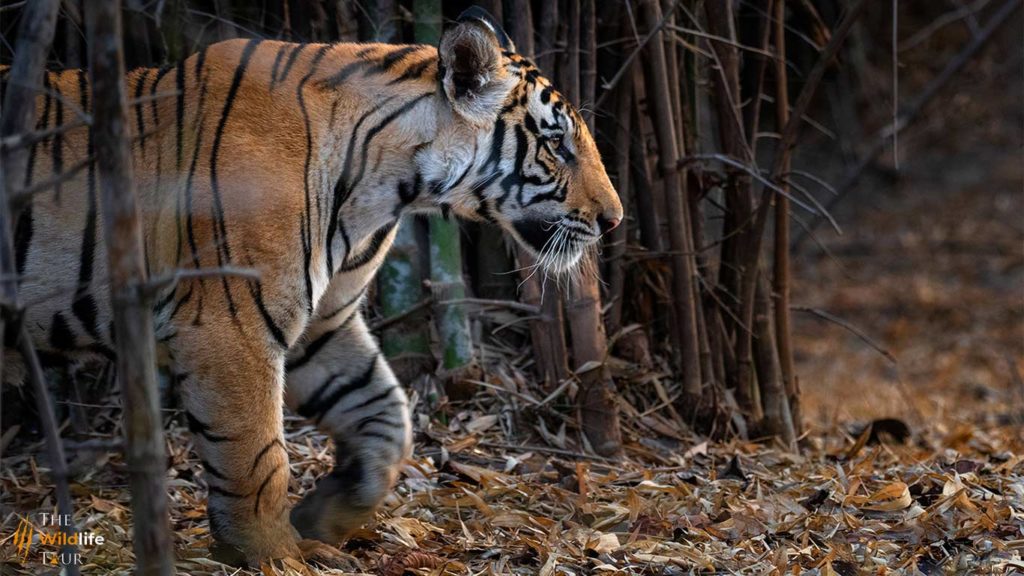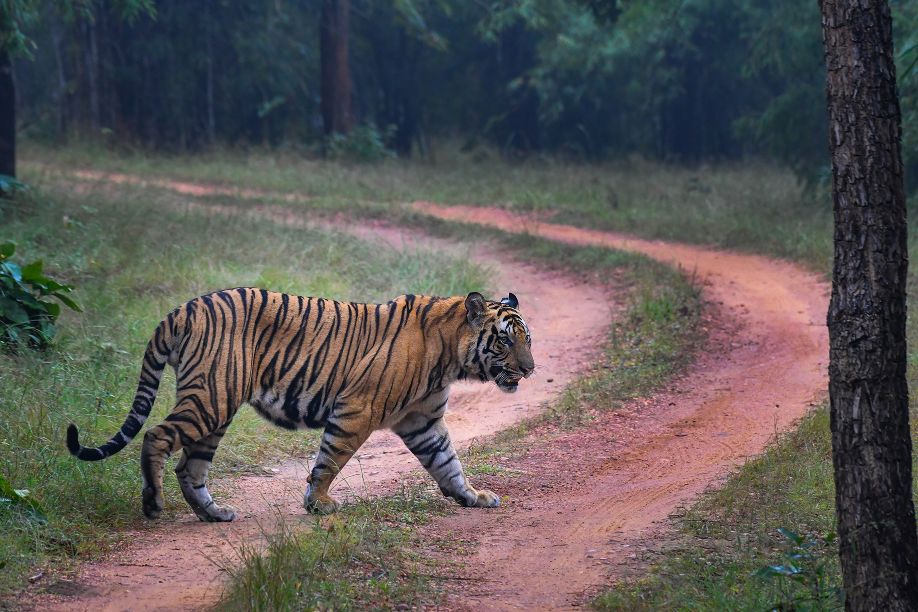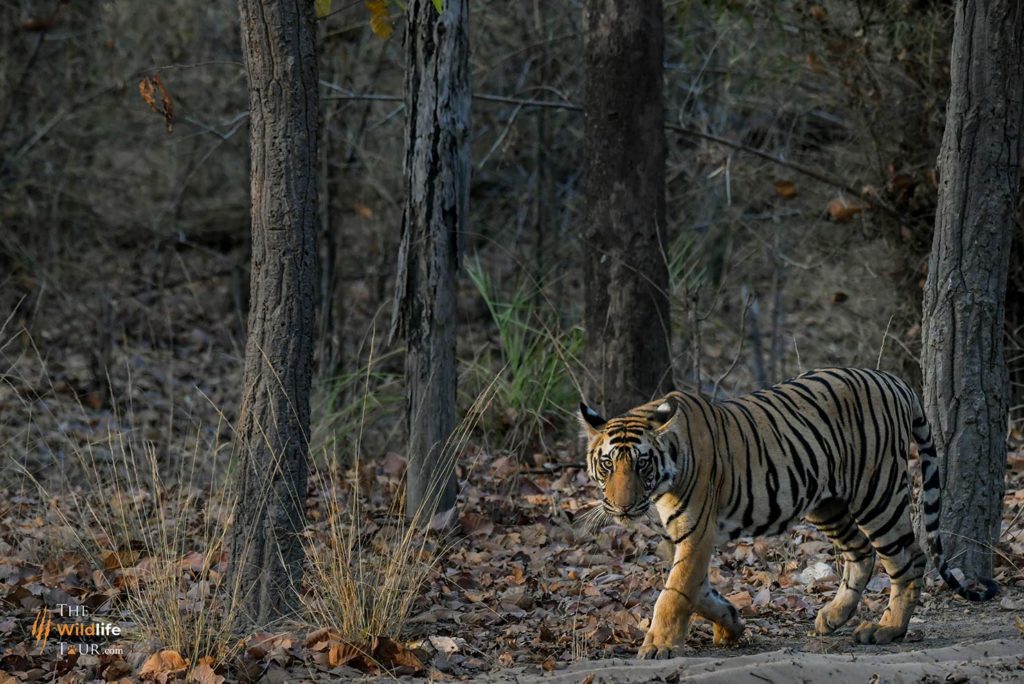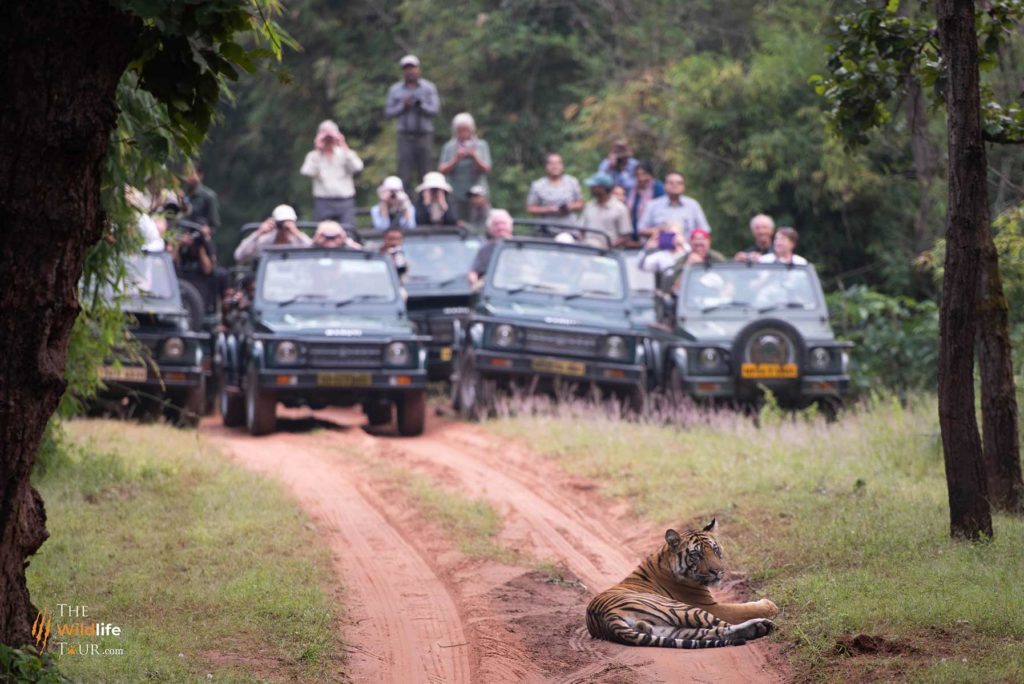Sighting the elusive tiger in India is undoubtedly present on many travelers’ must-do lists. While there’s no guarantee of sighting a tiger in the wild, these majestic creatures never cease to amaze. To help you plan the most unforgettable experience, let us guide you in determining the best time to go on a tiger safari in India based on your interests.
India is renowned for its tiger reserves, offering wildlife enthusiasts a chance to witness these elusive big cats in their natural habitat. Here’s a comprehensive guide to planning an unforgettable tiger safari in India.

The timing of your tiger safari can significantly impact your overall experience. The best time to go on a tiger safari in India depends on various factors, including weather conditions and the behavior of wildlife during different seasons. In general, the best time to visit India for a tiger safari is during the dry season, which usually extends from October to June. During the dry season, the vegetation is less dense, and the weather is pleasant, making it easier to spot tigers as they come out to water sources. The increased visibility enhances your chances of sighting tigers and other wildlife.
India’s climatic condition impact your chances of spotting tigers in the wild. India experiences diverse climatic conditions throughout the year, and the best time for a tiger safari can vary depending on the region and the specific national park you plan to visit. Let’s explore the different seasons and their suitability for tiger sightings:

Most of the national parks open in October after monsoon closure. The jungles are green and dense, making the backdrop more dramatic. This is considered the peak season for tiger safaris in India. The weather during winter is generally pleasant, with cooler temperatures and clear skies. Wildlife sightings, including tigers, are more common during this time as animals come out in search of water and prey. The vegetation is relatively dry from November to February, making it easier to spot wildlife in the open grasslands and near water bodies.
The morning safari can be chilly especially in tiger reserves of North India, so extra layers are advisable. Afternoon sun is pleasant and enjoyable. Misty mornings and dense foliage are appreciated by professional wildlife photographers. Tigers are more active and playful in pleasant weather.

The summer months are another good time for tiger safaris, especially in the early part of the season. As the temperatures rise, water sources become scarce, and wildlife tends to congregate around water bodies, increasing the chances of spotting tigers and other animals. However, the weather can be hot, especially in central and northern India, so it’s essential to be prepared for the heat.
For an unforgettable tiger spotting experience in India, mark your calendar for April, May, and June! With the scorching heat drawing wildlife to watering holes, you’ve got prime viewing opportunities. However, if you want to avoid the extreme hot weather, the slightly cooler window of March through mid-April is perfect for striking that ideal balance.
The monsoon season is generally not recommended for tiger safaris due to heavy rainfall and park closures. Many national parks and tiger reserves close during this time to protect wildlife and allow the forests to rejuvenate. However, some national parks offer tiger safari in buffer zones during the monsoon, where the lush greenery provides a unique and picturesque wilderness experience.

Consider the purpose of your visit to the tiger reserve. If your primary goal is to spot tigers, the dry season (winter and summer) is generally recommended. However, if you are interested in birdwatching or observing other wildlife, different seasons may offer unique opportunities. Research the specific reserve and its biodiversity to align your visit with your interests.
Some tiger reserves are famous for providing better opportunities for photographing a tiger because of its forest backdrop and water bodies, but present in remote areas or off the touristic trail. Some tiger reserves are in popular touristic trail but offer good chances of sighting tiger. Decide your motive and purpose to select the tiger reserve and the season to visit it. You can choose a Tiger specific tour in which you visit three to four tiger reserves to maximize your tiger sightings or you want a cultural Golden triangle tour or Rajasthan tour package with a tiger safari or a glimpse of India with its famous top destinations.
It’s important to note that wildlife sightings, including tigers, are not guaranteed during any specific season. Tigers are elusive creatures, and their sightings depend on various factors such as luck, habitat, and individual tiger behavior. Therefore, it’s essential to have realistic expectations and enjoy the overall experience of being in the wilderness, appreciating the diverse flora and fauna that India’s national parks offer.
Most of the national parks and tiger safaris offer early morning and late afternoon jeep safaris, providing opportunities for wildlife sightings and bird watching. The tiger is a nocturnal animal, so the sighting chances are high during early morning and late evening hours.
Additionally, it is advisable to check the specific timings and availability of national parks and tiger reserves as they may have different visiting seasons and safari schedules. Consulting with local guides, tour operators, or forest department authorities can provide more accurate information based on the specific park you plan to visit.